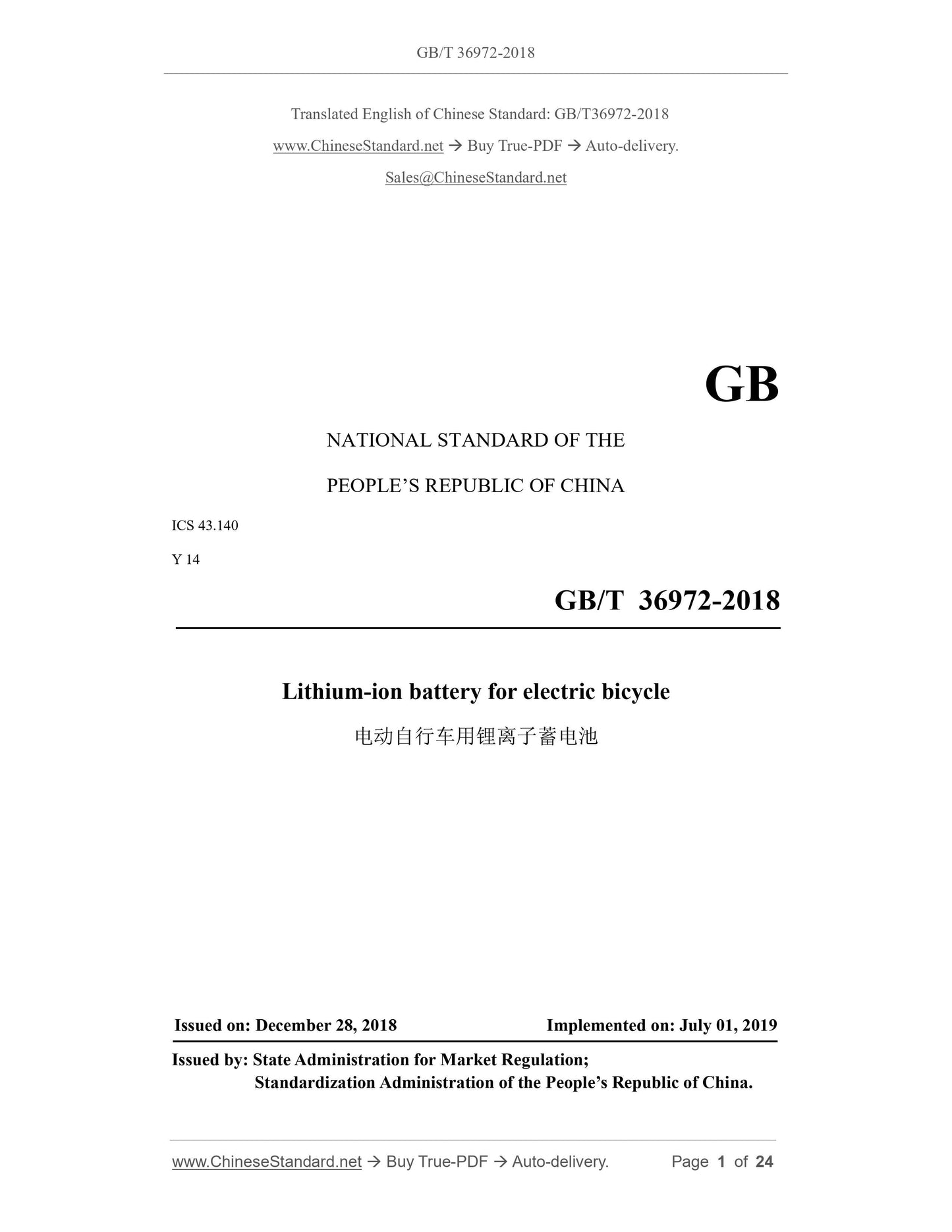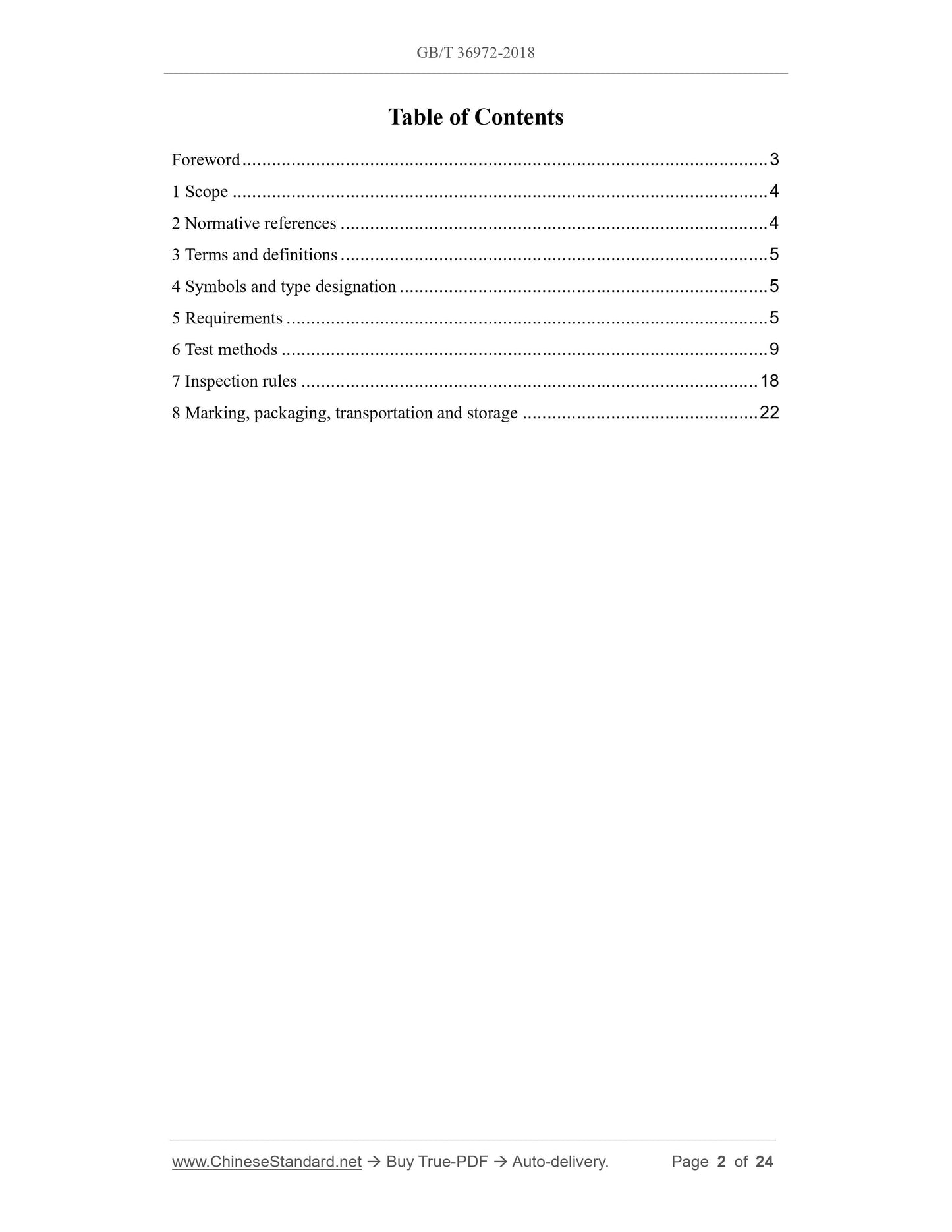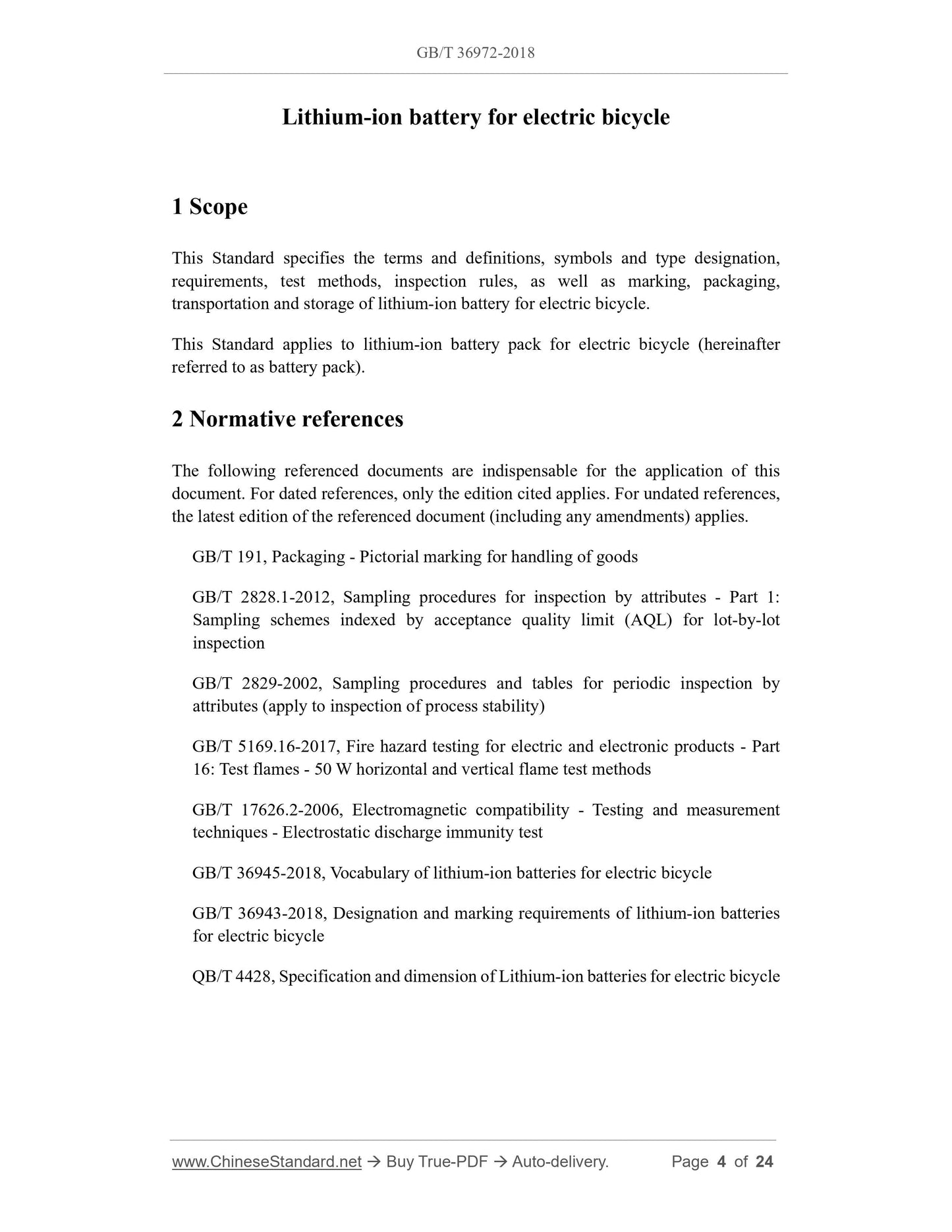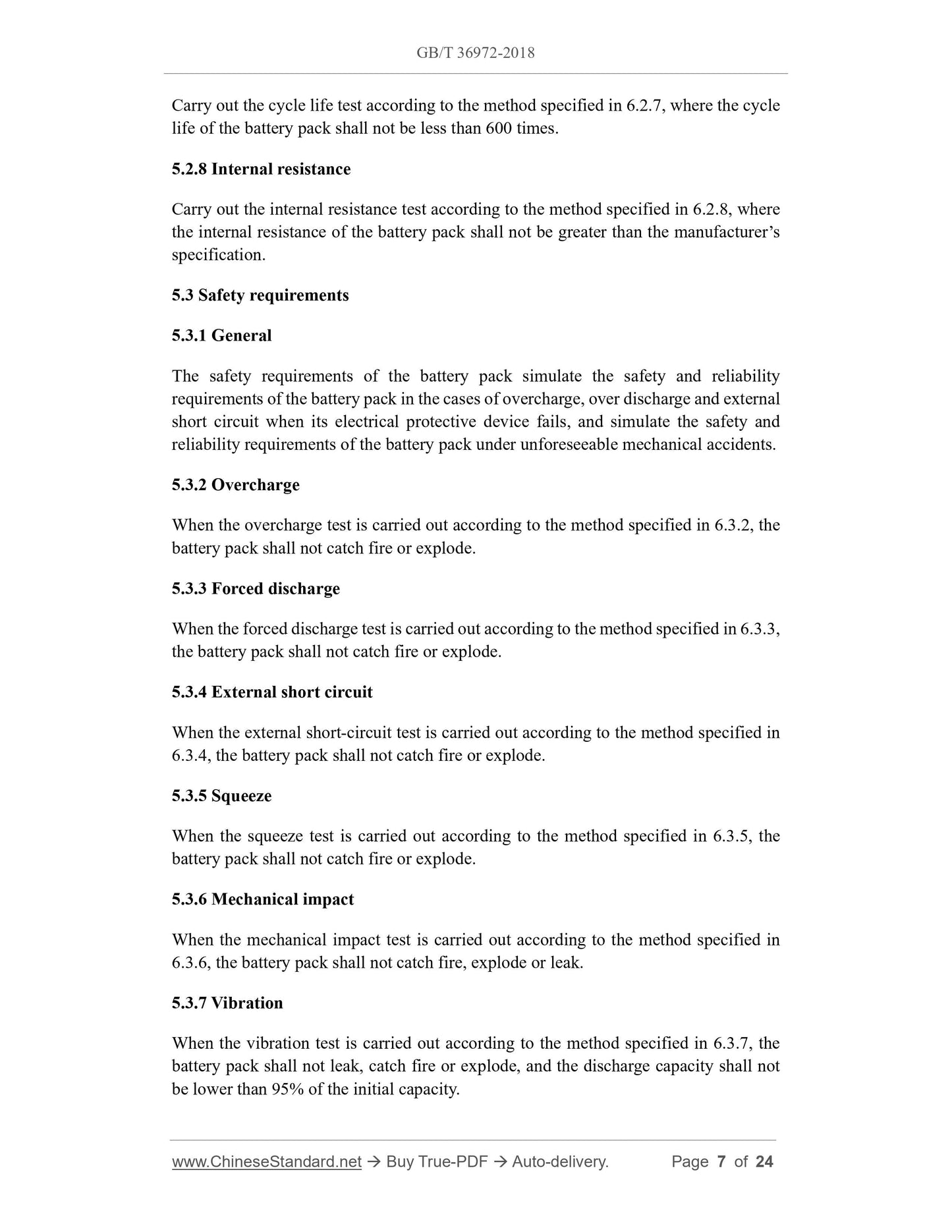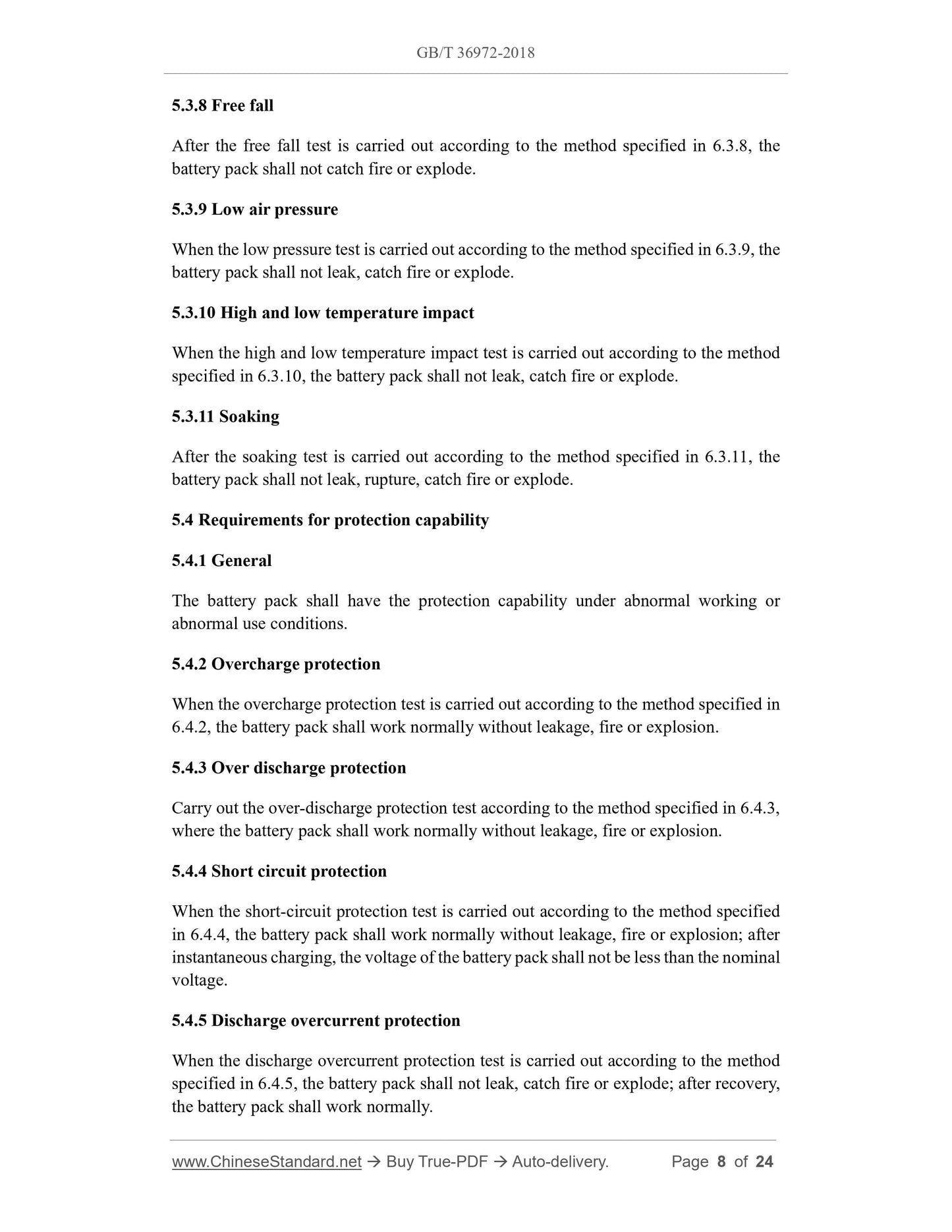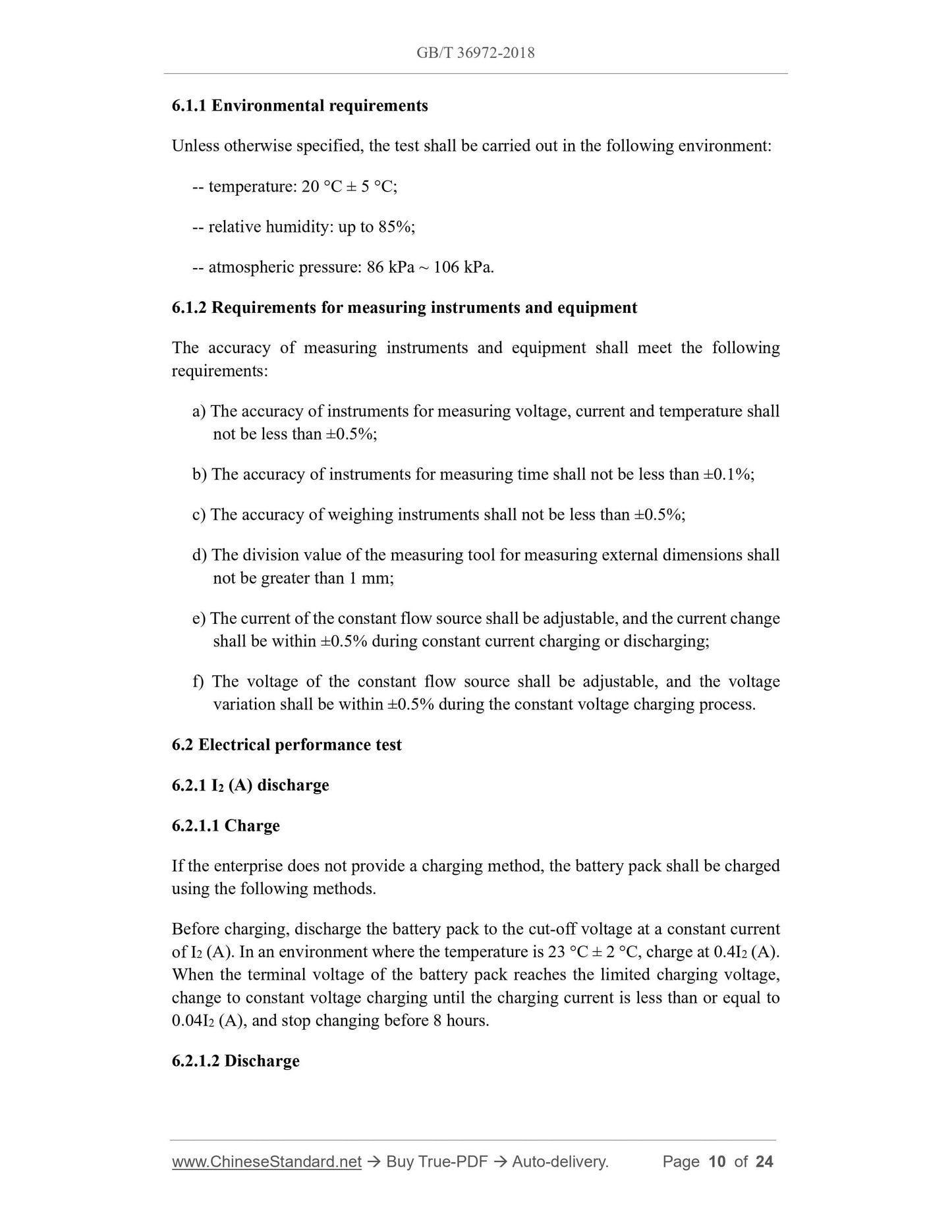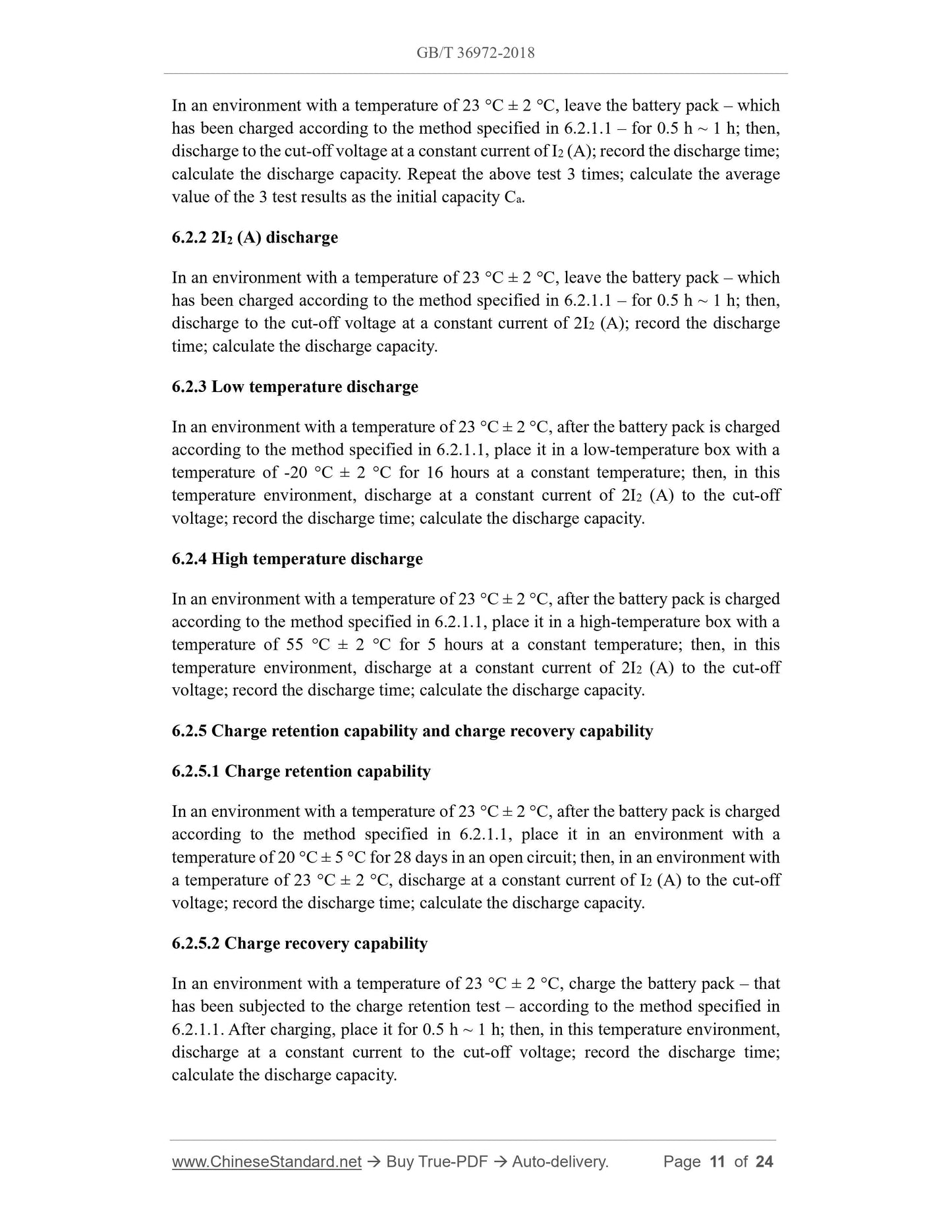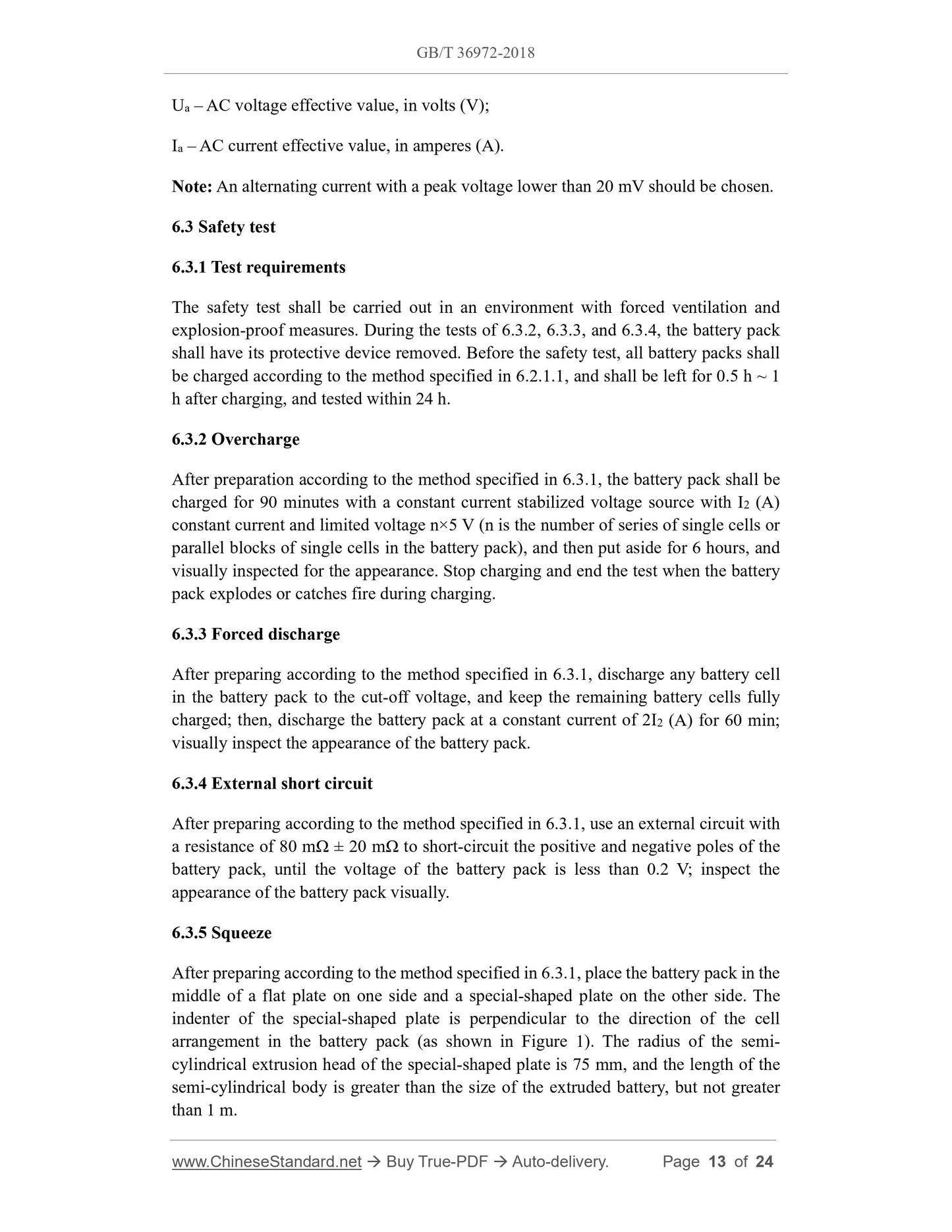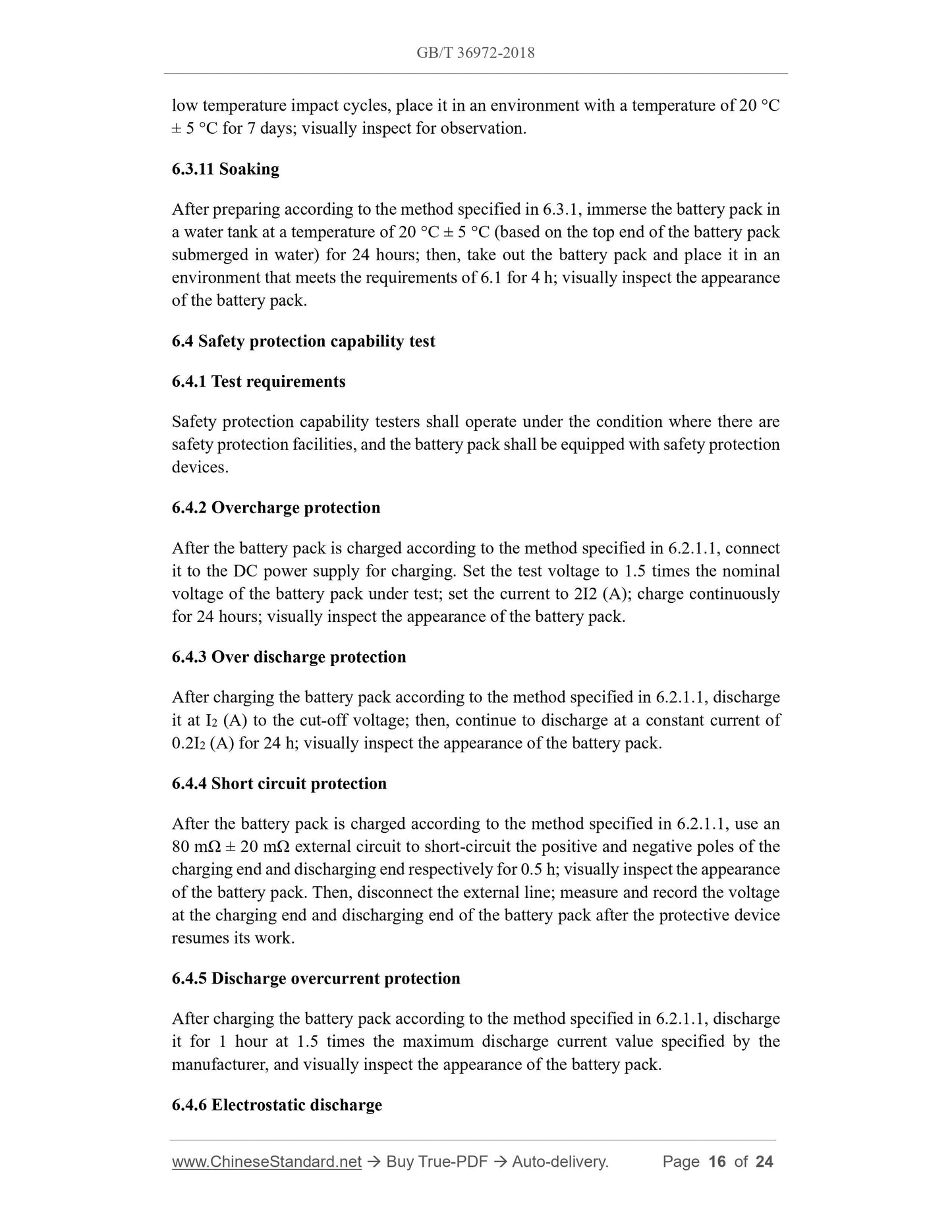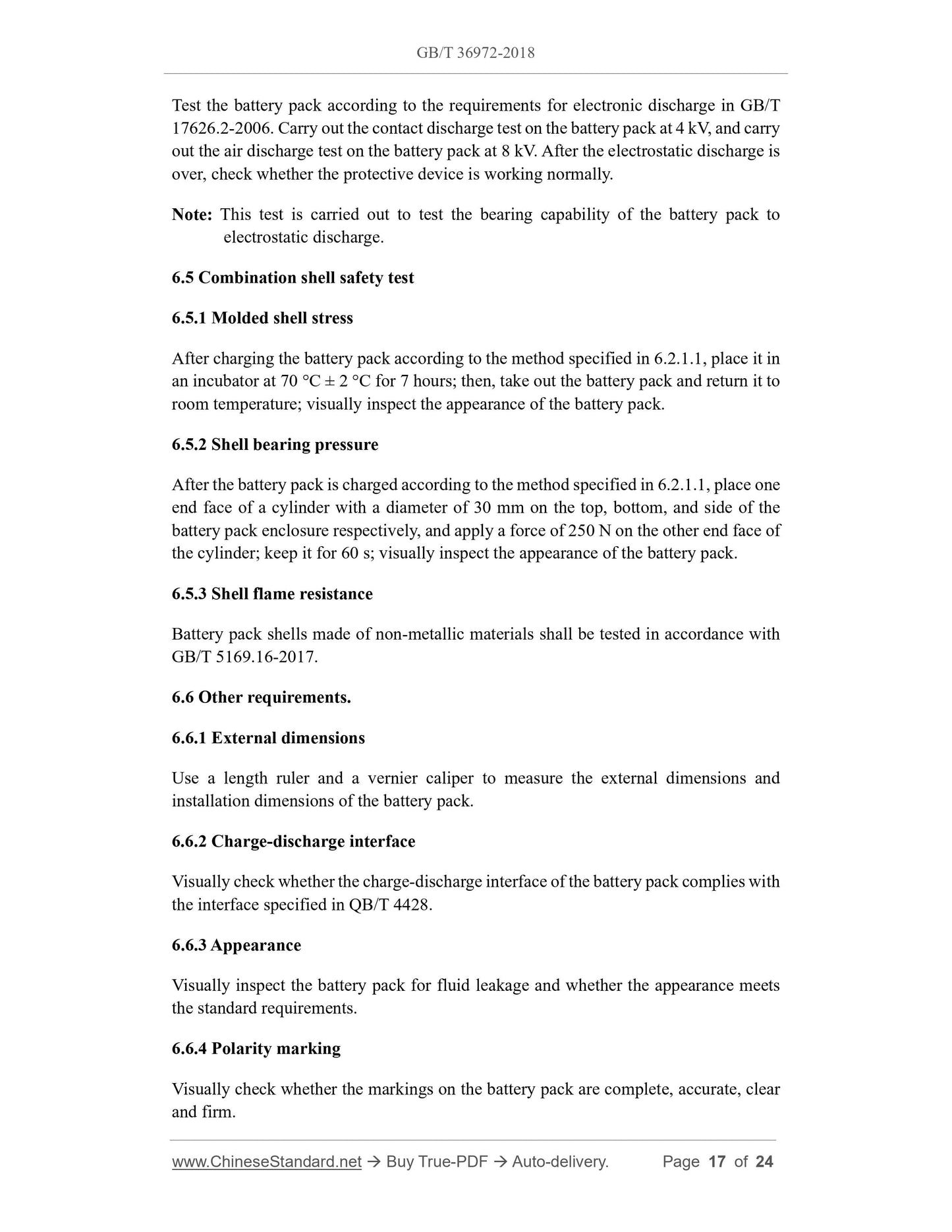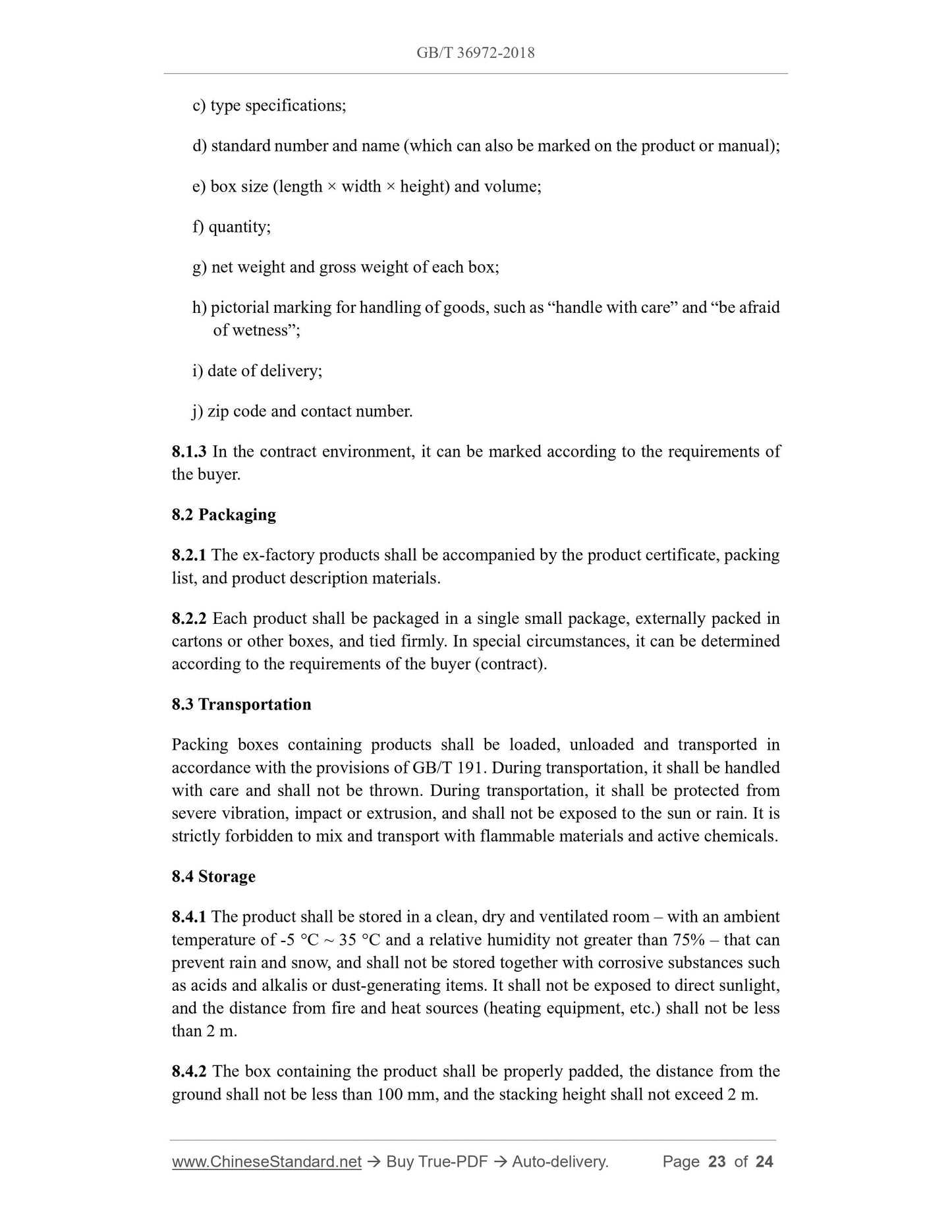1
/
of
11
www.ChineseStandard.us -- Field Test Asia Pte. Ltd.
GB/T 36972-2018 English PDF (GB/T36972-2018)
GB/T 36972-2018 English PDF (GB/T36972-2018)
Regular price
$290.00
Regular price
Sale price
$290.00
Unit price
/
per
Shipping calculated at checkout.
Couldn't load pickup availability
GB/T 36972-2018: Lithium-ion battery for electric bicycle
Delivery: 9 seconds. Download (and Email) true-PDF + Invoice.Get Quotation: Click GB/T 36972-2018 (Self-service in 1-minute)
Newer / historical versions: GB/T 36972-2018
Preview True-PDF
Scope
This Standard specifies the terms and definitions, symbols and type designation,requirements, test methods, inspection rules, as well as marking, packaging,
transportation and storage of lithium-ion battery for electric bicycle.
This Standard applies to lithium-ion battery pack for electric bicycle (hereinafter
referred to as battery pack).
Basic Data
| Standard ID | GB/T 36972-2018 (GB/T36972-2018) |
| Description (Translated English) | Lithium-ion battery for electric bicycle |
| Sector / Industry | National Standard (Recommended) |
| Classification of Chinese Standard | Y14 |
| Classification of International Standard | 43.140 |
| Word Count Estimation | 18,147 |
| Date of Issue | 2018-12-28 |
| Date of Implementation | 2019-07-01 |
| Issuing agency(ies) | State Administration for Market Regulation, China National Standardization Administration |
Share
